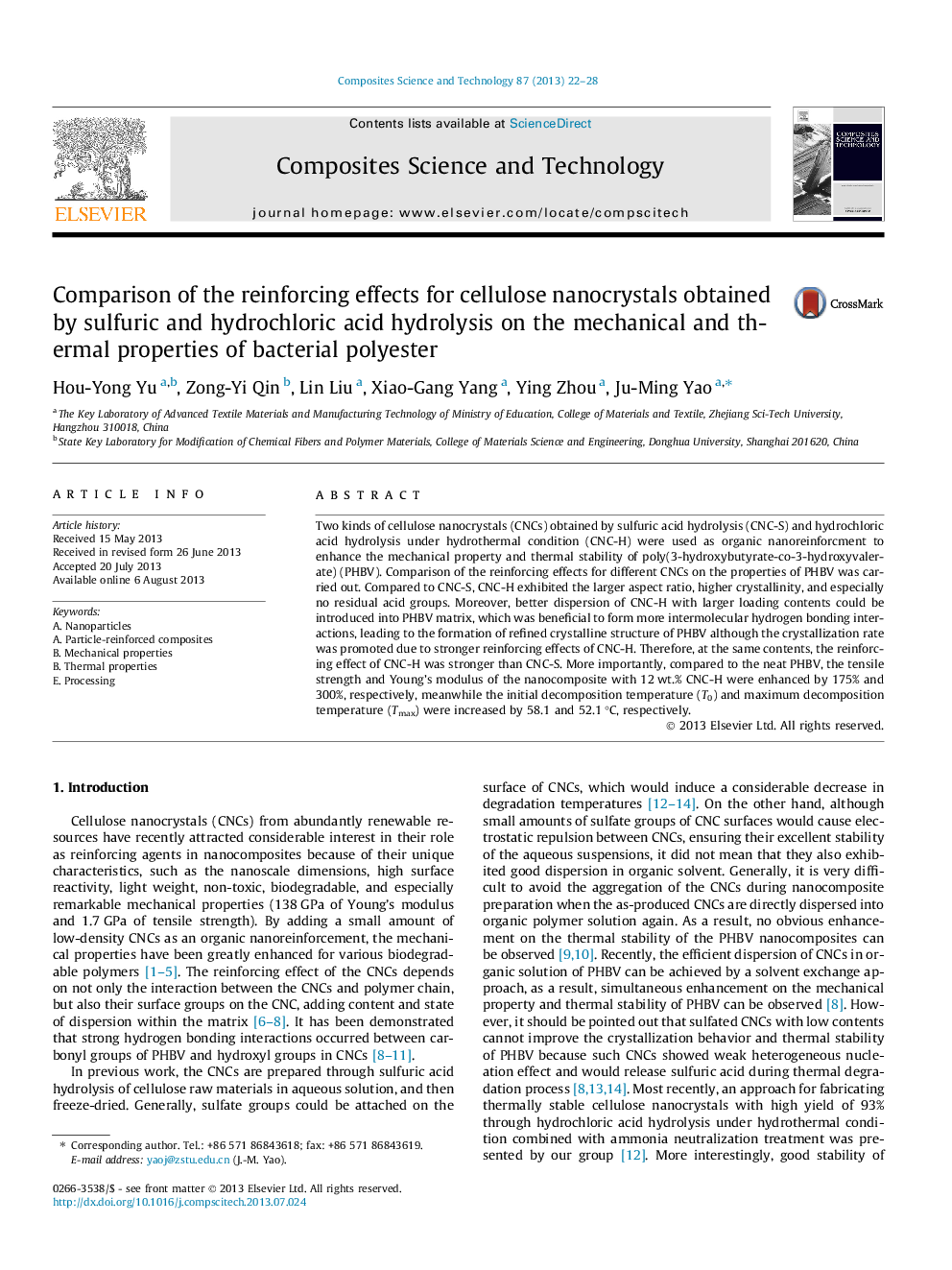| Article ID | Journal | Published Year | Pages | File Type |
|---|---|---|---|---|
| 7215864 | Composites Science and Technology | 2013 | 7 Pages |
Abstract
Two kinds of cellulose nanocrystals (CNCs) obtained by sulfuric acid hydrolysis (CNC-S) and hydrochloric acid hydrolysis under hydrothermal condition (CNC-H) were used as organic nanoreinforcment to enhance the mechanical property and thermal stability of poly(3-hydroxybutyrate-co-3-hydroxyvalerate) (PHBV). Comparison of the reinforcing effects for different CNCs on the properties of PHBV was carried out. Compared to CNC-S, CNC-H exhibited the larger aspect ratio, higher crystallinity, and especially no residual acid groups. Moreover, better dispersion of CNC-H with larger loading contents could be introduced into PHBV matrix, which was beneficial to form more intermolecular hydrogen bonding interactions, leading to the formation of refined crystalline structure of PHBV although the crystallization rate was promoted due to stronger reinforcing effects of CNC-H. Therefore, at the same contents, the reinforcing effect of CNC-H was stronger than CNC-S. More importantly, compared to the neat PHBV, the tensile strength and Young's modulus of the nanocomposite with 12 wt.% CNC-H were enhanced by 175% and 300%, respectively, meanwhile the initial decomposition temperature (T0) and maximum decomposition temperature (Tmax) were increased by 58.1 and 52.1 °C, respectively.
Keywords
Related Topics
Physical Sciences and Engineering
Engineering
Engineering (General)
Authors
Hou-Yong Yu, Zong-Yi Qin, Lin Liu, Xiao-Gang Yang, Ying Zhou, Ju-Ming Yao,
